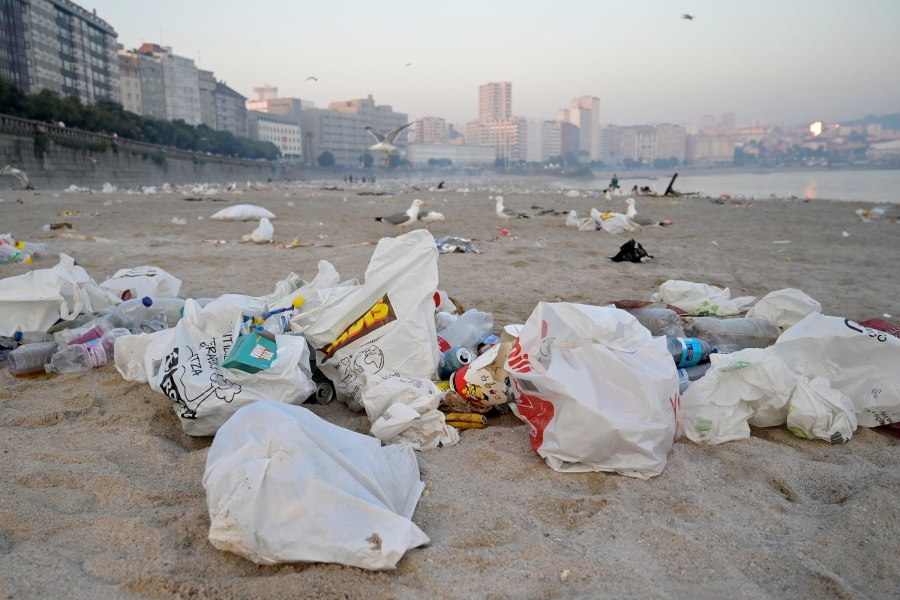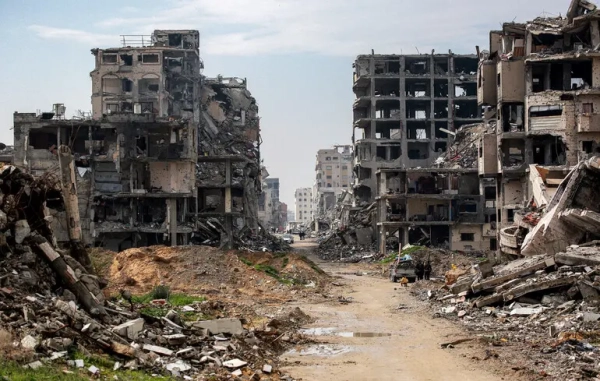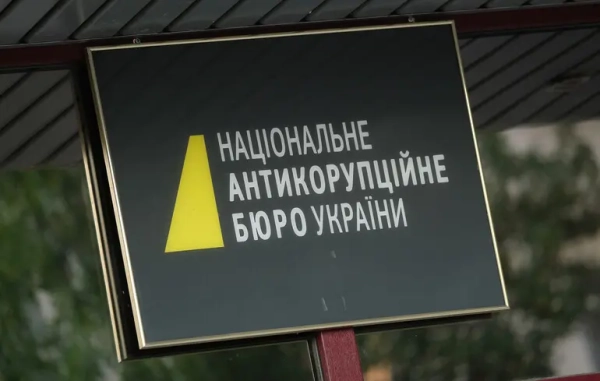
Microplastics are everywhere: In our pantries and refrigerators, in our oceans, in the headlines. The world produces hundreds of millions of tons of plastic each year, much of which will eventually end up in landfills or the environment. It seems a month doesn’t go by without a new study affirming one of two things (or both): The tiny particles in the plastics we use every day have made their way into everything from our brains to men’s testicles. They could be contributing to the rise in cancer rates among young people that has befuddled scientists, and they may contribute to a higher risk of heart attack and stroke. The negative effects of plastic on the environment and on the health of life on Earth should worry everyone.
At the same time, modern life depends on plastics, which are vital for everything from sterile single-use medical equipment to the modern transportation of goods around the globe. Durable and malleable, there are no real substitutes for plastics. So is there anything we can do about their ubiquity now?
The world’s governments have agreed to give it a try. For the past couple years, the United Nations has been negotiating a plastics treaty — a binding agreement that could set firm limits on plastic production, establish commitments to reducing plastic pollution, and encourage new investments to improve our ability to recycle plastics.
The goal, in theory, is to reach an agreement by the end of the year. But there have been four negotiating sessions so far, with no final language yet agreed upon, and the last session is supposed to be held in late November, so there’s a real possibility that a deal won’t be reached. (If world leaders can’t even agree on a pandemic treaty in the immediate aftermath of a world-altering public health crisis, as the World Health Assembly failed to do this year, it would be unsurprising for them end up at an impasse over a slow-moving crisis like plastics pollution.)
Scientists and advocacy groups fear that any final agreement could be a watered-down one, that objections from powerful industries will convince government leaders from wealthier countries to duck the commitments needed to reverse the plastic pollution crisis. The next few months will be pivotal as the world’s nations seek a consensus.
“I am cautiously optimistic that we can come out of this with the treaty that will be meaningful and for me, that starts with reducing plastic production,” John Hocevar, director of Greenpeace’s oceans program, told me. “If we don’t start making less plastic, then we’re not going to make a dent.”
The plastics crisis, explained
Plastics are made of polymers, extremely long repetitive molecules that are naturally occurring in things like animal horns and rubber trees. Humanity has been making use of these materials for millennia. But the modern era of plastics began a little more than a century ago, when Leo Baekeland, a Belgian chemist who had migrated to the US, invented the first entirely synthetic plastic in 1907.
The impressive heat resistance of plastic led to its wide adoption in the electrical equipment that was becoming more common at the time. The discovery of polymers in the 1920s and the industrial acceleration of World War II rapidly expanded humanity’s capacity to manufacture plastics.
In the second half of the 20th century, a worldwide explosion of petroleum production provided the raw materials for the mass manufacturing of plastics. Manufacturers turned to consumer applications for their products, such as clear packaging for foods, clothing, and lightweight suitcases. The types of plastics, too, have grown considerably since: Our flatscreen TVs and iPhones and smart watches all depend on the latest iterations.
Read more from Vox on plastic pollution
Finally, a solution to plastic pollution that’s not just recycling
The massive, unregulated source of plastic pollution you’ve probably never heard of
More than ever, our clothes are made of plastic. Just washing them can pollute the oceans.
Why 99% of ocean plastic pollution is “missing”
Plastics now are no longer seen as a scientific marvel, but rather as an inextricable part of everyday life. It is cheaper to produce than other materials, leading to the proliferation of single-use plastic items, from the vital (packaging for vaccine syringes) to the frivolous (grocery bags). It’s estimated there was more plastic produced in the first decade of the 21st century than in the entirety of the 20th. In 1950, humanity produced 2 million metric tons of plastic. Today, we are churning out 430 million metric tons of plastics every year, two-thirds of which is for only short-term use and quickly ends up in a landfill. In 2009, scientists at the research group RTI International and the trade association PlasticsEurope predicted: “Any future scenario where plastics do not play an increasingly important role in human life … seems unrealistic.”
Since the 1970s, some scientists and environmental advocates have warned that our plastic usage was unsustainable, harmful, and could deepen our dependence on fossil fuels. The birth of the environmental movement gave rise to concerns with plastic pollution, particularly its impacts on natural habitats, including the world’s oceans, and the dependence on petrochemicals required to produce it. You may have read about the Great Pacific Garbage Patch — an accumulation of human waste more than twice the size of Texas, 99 percent of which is plastic.
Thus far, the benefits have appeared to outweigh their environmental risks to industry and policymakers.
But more recently, we’ve been learning that the reach of plastics is much more pervasive than we previously thought. The tiny molecules that make up plastics, it turns out, can flake off and find their way into almost every part of the human body. Washing our plastic-laced clothing in hot water can ultimately lead to microplastics leaking out into the ocean, into the seafood that we eat, and back into our bodies.
It’s a feedback loop with dire consequences, based on emerging evidence: Microplastics may be associated with higher risk of dementia, heart disease, infertility, and more. And we haven’t figured out how to avoid ingesting them.
One study published earlier this year found microplastic pollution in every one of the two dozen human testicles and nearly 50 dog testicles that were sampled. Another group of researchers found that the increasing prevalence of microplastics parallels the alarming recent rise in early onset cancers. We already have research suggesting that some of the compounds in microplastics could contribute to cancer development.
The disproportionately low-income communities where plastics are produced may be especially at risk. Shiv Srivastava is the policy director for Fenceline Watch, a local environmental group in Houston, where a significant share of US oil is produced. He told me that because the city lacks zoning restrictions, residential developments are built next to those industrial sites.
“Our communities are negatively impacted directly from the toxic multigenerational harm of plastic production,” he said. Accidents are a common occurrence at oil refineries and other industrial plants, posing an acute risk to nearby residents, and there is also evidence of elevated cancer rates that could be linked to longer-term exposure to fossil fuel production.
On the other end of the plastic life cycle, plastic waste sometimes ends up being exported to the Global South, making rich countries’ trash an often hazardous problem for poor nations.
The world is working on a plastics treaty
And yet, unless something changes, global plastic production is projected to triple from current levels by 2060. By 2050, greenhouse gas output associated with plastic production, use, and disposal will account for 15 percent of all the world’s emissions. When Hocevar, Greenpeace’s oceans program director, started at the organization 20 years ago, he told me, most people did not consider plastics to be a major threat to human health.
“But pretty quickly, we realize that this isn’t just an ocean problem,” Hocevar said. “It’s a climate issue. It’s a human health issue. It’s an environmental justice issue.”
With the emerging evidence painting an increasingly clear picture of the danger plastics present to humanity, the United Nations Environment Assembly, made up of representatives from 193 countries, in 2022 decided to negotiate a legally binding agreement to end plastic pollution. They set a deadline for themselves: the end of 2024.
The questions under consideration have been clear from the start: Should plastic production be reduced? Should certain plastics be banned or phased out? What investments can be made to reduce the plastic pollution that already exists, particularly in precious natural habitats?
But the negotiators have not reached a final decision on any of the proposal treaty sections, instead continuing to deliberate over a range of options for draft language. There have been four formal negotiating conferences so far, with informal, behind-closed-doors talks in between. The final conference is scheduled for November in Busan, South Korea.
The process started with great optimism, based on contemporaneous notes taken by the Plastic Pollution Coalition, one of the large nonprofit groups involved in and closely monitoring the treaty talks. Every country, from large industrialized nations like the United States to the small island nations most directly affected by plastic dumped into the oceans, agreed on the need for such an agreement.
But it quickly became clear there were sharp divisions that could prevent a substantive agreement from being reached. At that first meeting in December 2022, major manufacturing countries (like China and India) and oil producers (Saudi Arabia and Iran), which supply the raw materials for plastic production, argued the treaty should require only that each nation create their own national action plans for plastic waste — not plastic production — which would include non-binding targets for reducing pollution.
On the other end of the spectrum, some more progressive developed countries, led by Norway, allied with African countries, led by Rwanda, argued for a global approach that limits plastic production and bans the use of certain compounds (like PFAS, also known as “forever chemicals”). Groups like Greenpeace have been advocating for a 75 percent reduction in plastic production. The US has said it supports a goal of zero plastic pollution in the environment by 2040 — though it hasn’t yet committed to the specific plan to realize that goal.
There are serious doubts over whether these two camps — known as the “high-ambition” and “low-ambition” coalitions among insiders — can find consensus before the end of the year, although everyone I spoke to expressed reserved optimism about a final deal.
The US government, for its part, has tried to play dealmaker, according to people close to the process. At times the US has appeared allied with China, Russia, and Saudi Arabia. But it is also trying to keep an open dialogue with advocacy groups and the more ambitious set of nations, Margaret Spring, chief conservation and science officer at the Monterey Bay Aquarium, told me.
“The United States has been playing kind of a dealmaker. They didn’t want to get trapped in a coalition,” Spring, who held senior positions at the National Oceanic and Atmospheric Administration during the Obama presidency and has represented the International Science Council at the negotiations, told me.
The question looming over the next several months: Is there really a deal to be made?
The most important dividing line in the plastic treaty talks
More than any other issue, specific limits on plastic production are the most contentious. Scientists and advocates argue they are necessary, that a successful treaty must address the full life cycle of plastics from birth to disposal.
But, as the fight against climate change has affirmed again and again, overcoming the influence of the oil and gas industries is extremely difficult. Nearly 200 lobbyists from those industries attended the fourth negotiating conference in Ottawa this past May. They significantly outnumbered representatives from the scientific and Indigenous communities, making the argument that a treaty should focus on demand, rather than on supply, and on recycling. The problem, scientists and advocates say, is that recycling plastics is notoriously difficult and can lead to its own health hazards. This week, California sued ExxonMobil for allegedly lying about the effectiveness of plastic recycling.
At the May meeting, the majority of the conference agreed to exclude “upstream” measures — i.e., those focused on supply and production — from any of the agreement draft language. While there is still an opportunity to insert such provisions into the final draft, it represented a setback for the environmental advocates.
“It’s like trying to regulate tobacco and we know it causes cancer. But then you’re bringing in all these executives to create regulations on the deadly product. Essentially the same thing here,” Erica Cirino, author of Thicker Than Water: The Quest for Solutions to the Plastic Crisis, now working at the Plastic Pollution Coalition, told me.
There have been some signs of the impasse thawing. In August, a group of environmental activists attended a meeting with US government officials, in which they were told that the Biden administration would support limits to plastic production; Reuters soon reported the same, citing a source close to US negotiators.
“They don’t know how they’re gonna do the supply side, but they’re willing to say that that has to happen,” Spring said. “You can’t recycle your way out of it.”
But since that development in August, there has not been a more forceful public declaration of that new position from the US government — to the discouragement of some advocates.
“Right now, while we applaud what this shift could potentially mean, without meaningful details, it’s only as valuable as a piece of paper it’s written on,” Srivastava told me. “Right now, there isn’t one.”
Some of the people closely monitoring the treaty talks chalk up America’s caginess to its dealmaker role, avoiding a public position to keep more resistant countries at the table.
The risks of failure
Beyond plastics production levels, there are still plenty of other details to work out. Should certain substances be banned or phased out? Should companies be required to disclose the chemicals in their plastics? Should countries that refuse to ratify the treaty be subjected to punitive trade measures?
All of those questions are supposed to be addressed during ongoing “intersessional” negotiations that are not made public, and then at the final November conference. Some of those monitoring the process say they would not be surprised if an additional conference is scheduled to hash out a final deal, which advocates say would be preferable to a weak agreement that lacks the mechanisms to expand in the future.
Others, however, worry that the final product could only be more watered down the longer negotiations go on. As both sides look for an exit strategy, the low-ambition countries could gain more leverage to insist, for example, on nixing any firm production limits on plastics.
“When you have momentum, you use the momentum. Keep going,” Spring said. “I think that the danger of extending is: Does the air go out of the balloon?”
Advocates are urging policymakers to seize the moment. “Every minute that we don’t have this treaty is more time where plastic pollution is accumulating,” Srivastava continued. “It is only going to increase without mandated reduction targets worldwide. So it’s super important that it happens.”
Source: vox.com






